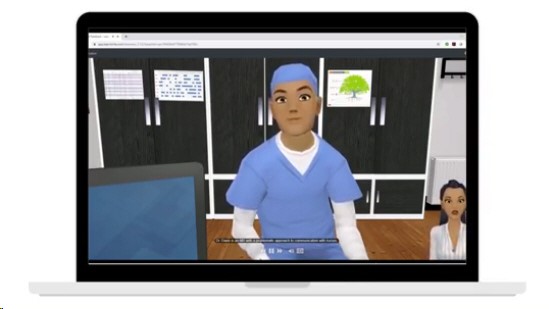If you ever wished you could practice those tough work-related conversations and find out how they might be received before you actually did it, it turns out you can, thanks to 3D simulations that ranks executives and employees on their effectiveness in crucial situations.
“The benefits of simulation-based training are indisputable and innumerable,” one recent report says. “Given its power and efficacy, this methodology is used in a litany of sectors beyond aerospace and military, where it gained its initial foothold.
“These include everything from manufacturing and retail to healthcare, fitness, fashion and hospitality, reports indicate. No longer reserved for mammoth corporations, now businesses of every size and scope can benefit from highly optimized interactive cyber-training innovations,” the report says.
Related: Videoconferencing and Collaboration Tools Are Great—but Not for Layoffs and Furloughs
Short-burst micro-learning 3D simulations “can immediately teach employees how to effectively navigate difficult conversations and communicate in a way that drives optimal outcomes and enriches relationships—all irrespective of where that employee is based,” according to the report.
This preparation and simulation can help to eliminate customer confusion, rectifying unconscious bias to create a more inclusive culture, promote conflict resolution and de-escalation and help leaders to convey appropriate and consistent responses to crises including COVID-19.
It can also enhance employee relations, empower employees to constructively escalate issues that aren’t discussed outside of “water cooler whispers” and more.
How 3D Simulations Work
Allied Market Research indicates the virtual training and simulation market, currently valued at $204.4 billion, is projected to reach $579.4 billion by 2027.
“This and other such forecasts reflect the extent to which companies are now requiring their executives and managers to participate in virtual training and simulation to become better prepared for real-life situations,” says the report.
“3D simulations help companies provide employees with interactive bite-sized learning sessions that provide a quick and easy way to engage in real-world scenarios, explore emotional responses and receive immediate feedback so they can reflect on their own performance—all in a safe virtual environment,” said Ed Beltran, CEO of Fierce Conversations—a company spearheading customized simulations that teach employees how to handle difficult customer conversations.
“This kind of training can address and resolve veritably any on-the-job challenge,” he said.
“The overarching goal of microlearning immersion is to help employees become expert conversationalists by knowing what to talk about, how to talk about it, and why it matters for the bottom line of the specific employer.”
The most effective 3D simulations are 15 minutes or less—and also fully customized for each business and situation. Personalized avatars help to recreate scenarios and build empathy, and immediate feedback helps employees learn and improve with each session.
Gamification capabilities are shown to maximize learner engagement and knowledge retention. In fact, interactive learning is not only shown to boost learning engagement by 50%, but it also enhances knowledge retention by more than 20%.
I still think there are situations where technology should be a last resort or not used at all in the workplace, where human interaction and looking at each other eye-to-eye is not only the most effective way of delivering a message but the best way to do it.
But I must admit these 3D simulations seem pretty cool and could certainly help someone like me who gets a bit nervous before my rare public speaking engagements. I don’t often worry when I’m interviewing someone either in person or on video or the phone but I do “umm” and “ahh” a lot.’
Perhaps these quick lessons can help me to think twice before relying on those verbal crutches and to focus on asking more concise, direct questions. It’s worth a shot. I just might check it out.





